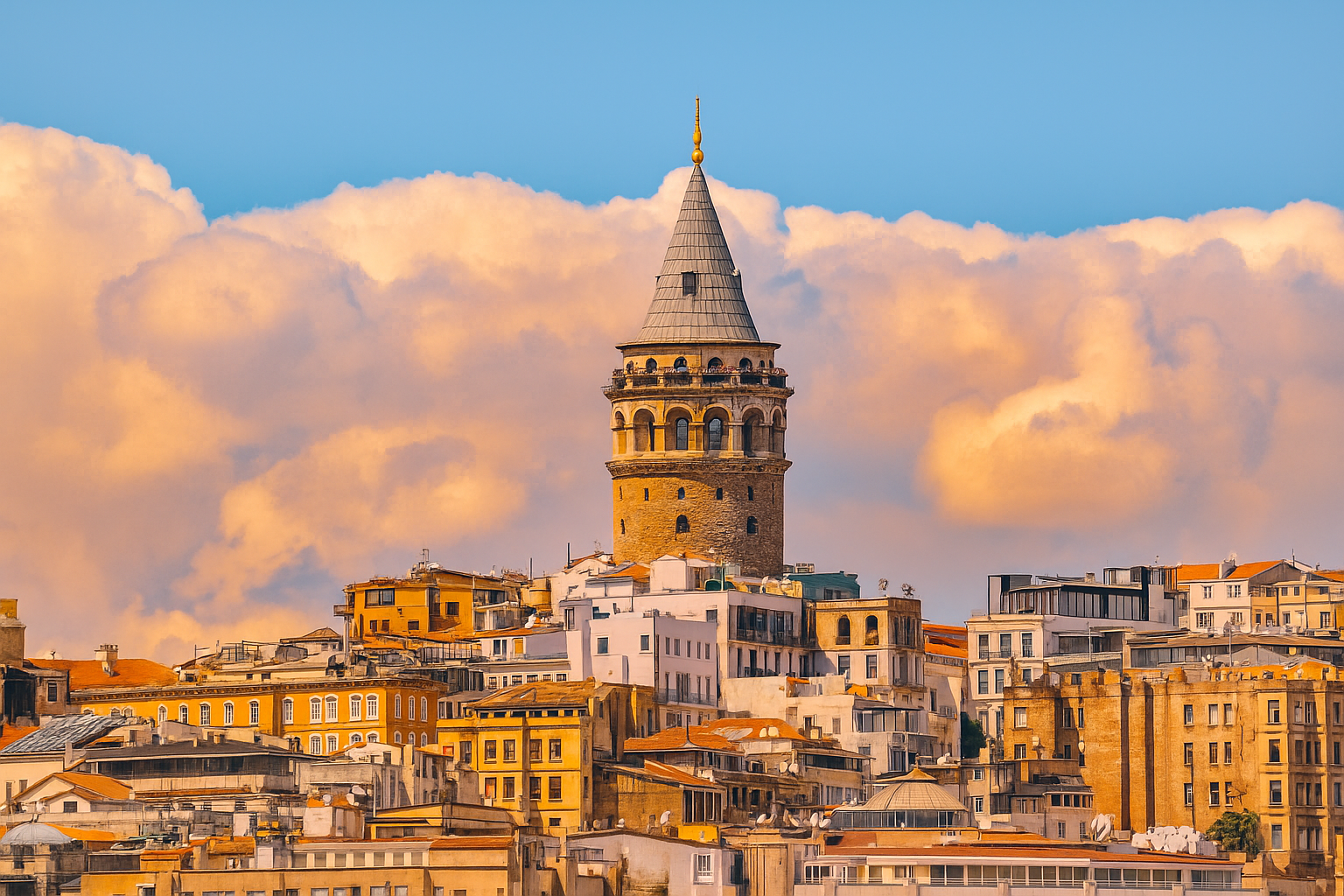
Galata Kulesi (Galata Tower)
HISTORICAL BACKGROUND AND SIGNIFICANCE
Galata Kulesi, or Galata Tower, stands as one of Istanbul's most iconic landmarks, with a history that dates back to 1348. Originally constructed by the Genoese as part of the city’s fortifications, the tower was known as the Christea Turris, or Christ Tower. Its primary purpose was to serve as a watchtower to monitor the Golden Horn and the surrounding areas. The tower has witnessed the rise and fall of empires, from the Byzantine to the Ottoman, and has been a silent observer of the city’s transformation over centuries.
In 1453, after the conquest of Constantinople by Sultan Mehmed II, the tower was integrated into the Ottoman defense system. Over the years, it has served various functions, including a fire lookout, a prison, and even a lighthouse. The Galata Tower symbolizes the blend of cultures and histories that define Istanbul, making it a significant landmark not only for its architectural beauty but also for its rich historical narrative.
ARCHITECTURAL FEATURES AND DESIGN ELEMENTS
The Galata Tower rises to a height of 66.9 meters and features a cylindrical structure made of limestone and granite. Its design is characterized by a conical roof that tapers elegantly, topped with a lantern-like structure. The tower's base is adorned with a series of arched windows, which were originally designed for both aesthetic appeal and functional purposes, allowing light and air to flow through.
The interior of the tower consists of a spiral staircase with 143 steps leading to an observation deck that offers panoramic views of Istanbul. The walls are thick, providing structural integrity and a sense of fortification. The tower's restoration in the 1960s preserved its medieval charm while adding modern amenities for visitors. The combination of Gothic and Romanesque architectural styles is a testament to the diverse influences that have shaped Istanbul’s skyline.
CULTURAL AND RELIGIOUS IMPORTANCE
Galata Kulesi is not only an architectural marvel but also a cultural symbol of Istanbul. It represents the city’s historical ties to trade and navigation, as it was a crucial point for merchants and sailors navigating the waters of the Golden Horn. The tower has inspired countless artists, poets, and writers throughout history, becoming a muse for creativity and expression.
In addition to its cultural significance, the tower has also played a role in local folklore and legends. One of the most famous tales is that of Hezarfen Ahmet Çelebi, an Ottoman aviator who, according to legend, flew from the tower to Üsküdar using homemade wings. This story reflects the spirit of innovation and adventure that has always been a part of Istanbul’s identity.
VISITOR EXPERIENCE AND WHAT TO EXPECT
Visiting Galata Kulesi is an unforgettable experience. As you approach the tower, you will be greeted by its imposing presence and the vibrant atmosphere of the surrounding Galata district, filled with cafes, shops, and art galleries. The entrance fee is modest, and once inside, visitors can ascend the spiral staircase or take an elevator to the observation deck.
At the top, you will be rewarded with breathtaking views of the Bosphorus, the historic peninsula, and the sprawling cityscape of Istanbul. The observation deck is spacious, allowing for ample photo opportunities. On clear days, you can see as far as the Princes' Islands. There is also a café on the upper level, where you can enjoy a refreshing drink while soaking in the stunning vistas.
INTERESTING FACTS AND ANECDOTES
1. The Galata Tower was the tallest building in Istanbul for several centuries, making it a prominent feature of the skyline. 2. During the Ottoman era, the tower was used as a lookout point for fires, and a bell would ring to alert the citizens of any danger. 3. The tower has been featured in numerous films and literature, symbolizing the romance and mystique of Istanbul. 4. In 1960, the tower was restored and opened to the public, transforming it into a major tourist attraction. 5. The tower is often illuminated at night, creating a magical ambiance that enhances its beauty.
PRACTICAL VISITING INFORMATION
- **Hours**: Galata Kulesi is open daily from 9 AM to 7 PM, with extended hours during the summer months. - **Best Times to Visit**: Early morning or late afternoon are ideal times to avoid crowds and enjoy the sunset views over the city. - **Tips**: - Purchase tickets online in advance to skip the long queues, especially during peak tourist seasons. - Wear comfortable shoes, as the spiral staircase can be steep and narrow. - Bring a camera to capture the stunning views and the intricate details of the tower’s architecture. - Consider visiting nearby attractions, such as the Galata Bridge and Istiklal Street, to make the most of your day in the area.
In conclusion, Galata Kulesi is not just a tower; it is a gateway into the rich tapestry of Istanbul’s history, culture, and architectural brilliance. Whether you are a history enthusiast, an architecture lover, or simply a traveler seeking stunning views, a visit to Galata Tower is an essential part of experiencing the magic of Istanbul.